I tried the “office of the future,” also known as the “work-from-home killer.”
Offices of the future will forego open cubicles for ‘conscious’ pods that adjust the indoor climate as soon as you step inside and close the door.
I ventured outside my home office to try out what’s considered “the work-from-home killer,” and found the structure packed with sustainable technology, including software used in self-driving cars.
As you sat in the 4G-connected Smart Pod, ventilation started automatically, air was blown through the pod every minute, and lighting was immediately adjusted based on the ambient lighting.
While the pods feature glass siding to provide a window to the outside world, the inside was incredibly quiet — you could hear a pin drop.
Framery, the brains behind the plan to get employees back into the office, offers various options for staff: from a pod with one desk to a table with seating for four people and a larger meeting room for around six employees.
I ventured outside my home office to test out what is considered ‘the work from home killer’, and found the structure packed with sustainable technology, including software used in self-driving cars
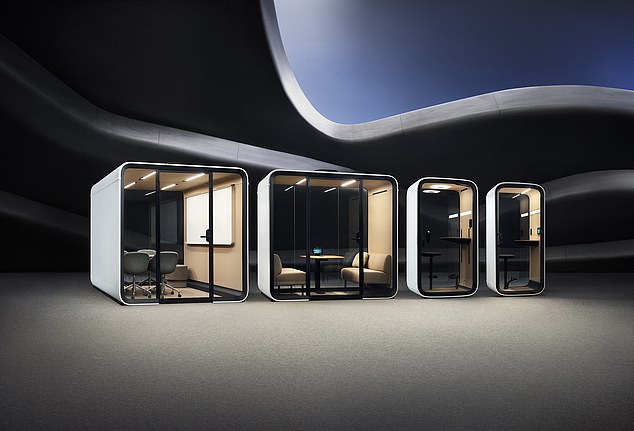
Framery’s hi-tech office pods are billed as ‘the ultimate privacy pod’ (Framery)
More than four million Americans are still working at least half the time, years after the pandemic was declared over.
Some companies see remote work as a cost savings — because they don’t have to spend money on an office space — but others have grown tired of Zoom meetings and Slack messages.
Angela Ferguson, founder of workplace strategy and design agency Futurespace, told NCA NewsWire that more leaders could expect a full-time return to the office this year.
But she said it would be important to motivate and not impose it with creative incentives and office renovations, such as pods built by Framery.
Samu Hällfors, CEO and founder of Framer, said: “The function of an office is no longer simply about providing a place to work.
‘With Smart Pods we help outdated offices and workspaces adapt to the needs of the people within them, rather than the other way around.
The adaptive and intuitive technology of ‘Smart Pods’ ensures that people have enough space and convenience to concentrate and collaborate without making any concessions.’
I chose to test Framery’s Contact, a pod that offers a life-size teleconferencing screen with a visually and acoustically isolated interior.
And it felt like I was in the room with someone – when I sat down in the pod and the other person said, “Hi,” I almost jumped out of my skin.
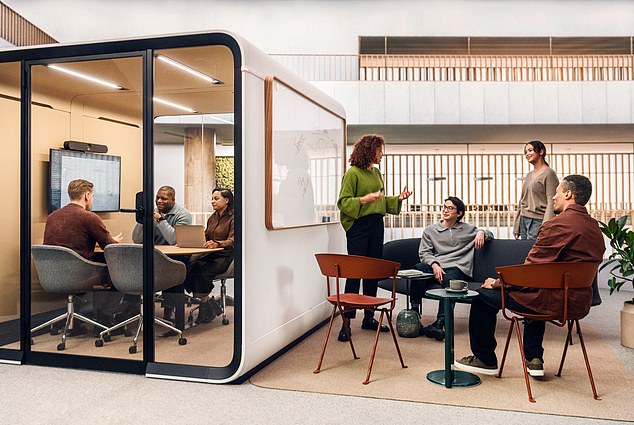
Framery’s hi-tech office pods are billed as ‘the ultimate privacy pod’ (Framery)
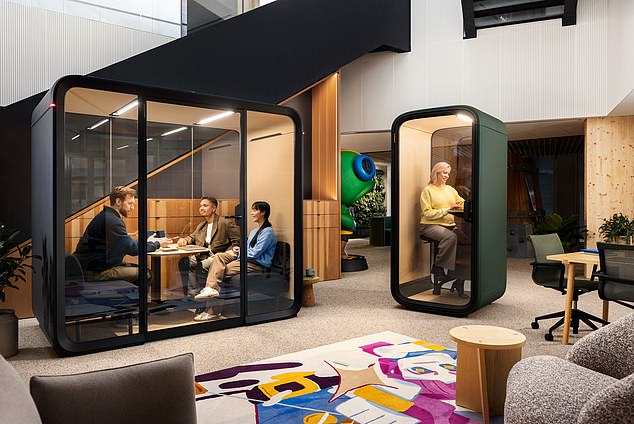
The pods are equipped with radar sensors and 4G connections (Framery)
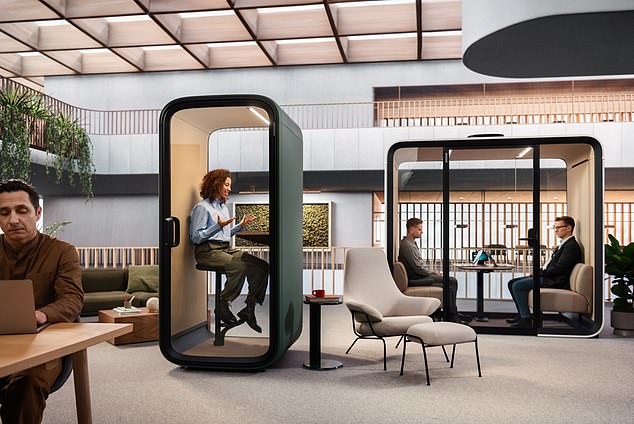
The hi-tech pods ensure that no one outside can ‘listen in’ (Framery)
The pod also featured a powerful cardioid microphone, specifically designed to pick up the sound in front of it and block out anything behind it.
The new Smart Pods feature a Wi-Fi connection, radar sensors that watch for new visitors, and a patented acoustic structure designed to block outside human speech.
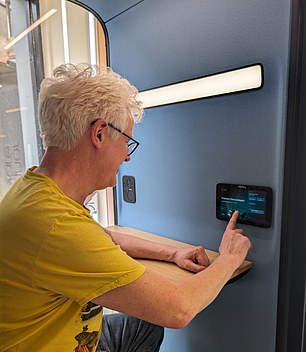
Rob adjusts settings in a pod (Rob Waugh)
Also within the closures is Framery’s Office Sound Masking System Embedded, which blasts “pink noise” (like white noise, but at a lower frequency) into the area around the pod, so no one could overhear what I said during my meeting.
Light switches are placed throughout the interior – one for natural light overhead and one at eyebrow height – designed to make faces bright and radiant during video calls.
And you can use your own laptop, or the pods can be equipped with screens and speaker systems.
As soon as I sat down, I felt the environment become a pleasantly cool temperature as the air conditioning automatically adjusted based on the heat my own body gave off.
But I was thrilled to learn that I wasn’t breathing air from the previous occupant thanks to a feature that flushes the indoor air out every 60 seconds.
Sit in and the pod itself will display an automatic booking screen, but you can also pre-book directly from Microsoft and Google calendars.
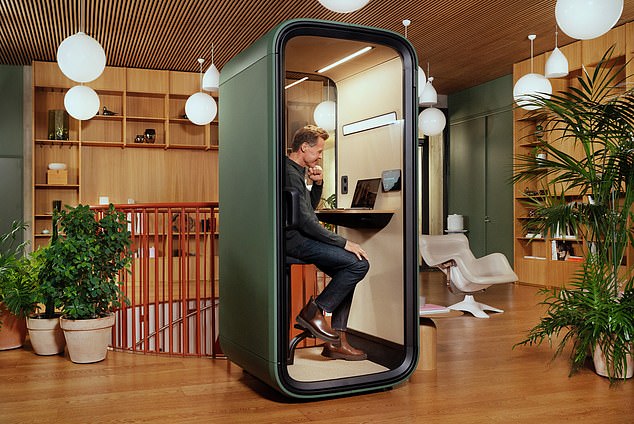
The pods are equipped with radar sensors and 4G connections (Framery)
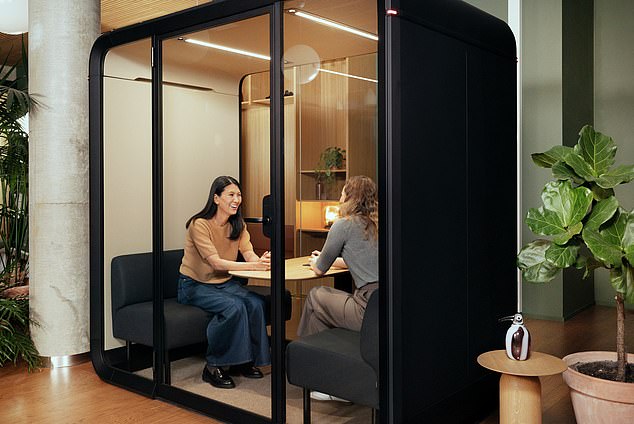
The pods are equipped with radar sensors and 4G connections (Framery)
Offices using the pods can use Framery’s Connect app to see which pods are used most and automatically move or delete them.
Office pods have boomed since the pandemic, and Framery was the first to create them: can ‘privacy pods’ convince young people to trade in their pajamas for the daily commute?
For me, the fact that you can say things into them without worrying about whether people outside can hear them makes them an instant ‘sell’ – although, like most office pods, they have an eye-watering price tag of $4,000 per pod…
The cheapest option is $6,000 for the ROOM Phone Booth, which offers standing space and a small table attached to the wall.
This version is intended for making private phone calls in a busy office.
The most expensive version is the Focus Room at $19,000, which fits one employee but is the same size as a traditional cubicle.
